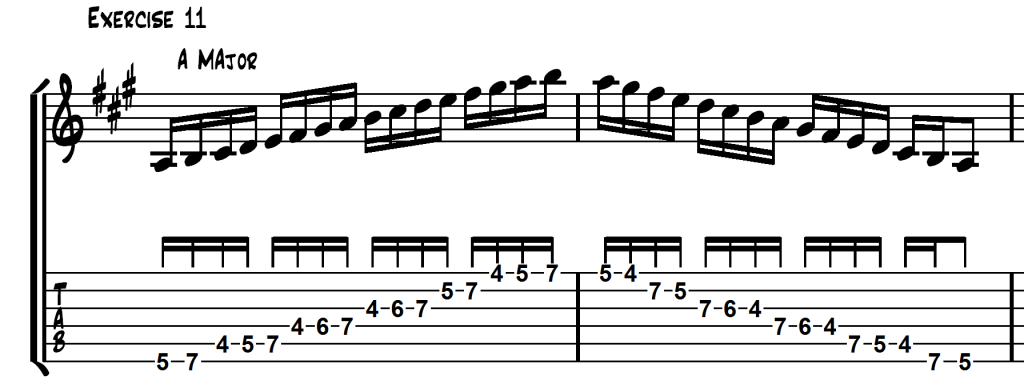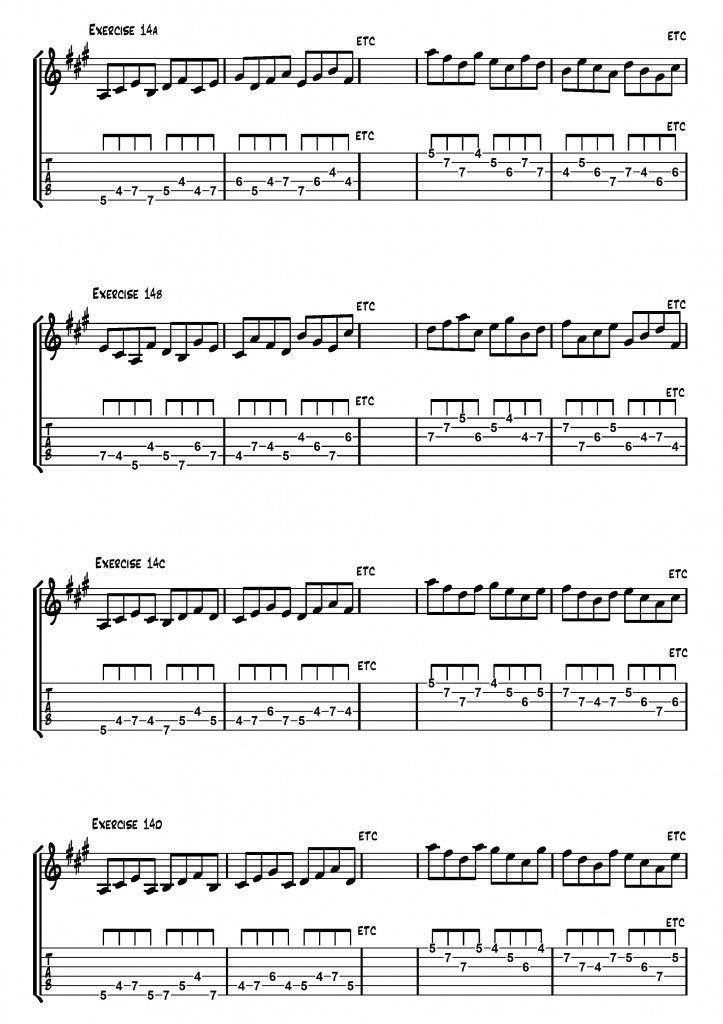Essential 16th note scale patterns
The following scalic ideas are something of a ‘dictionary’ of modern melodic approaches. They are technically demanding in both hands and certainly great exercises, but by studying them will also train your ears to hear intervals, triads and arpeggios. As such, they are of massive help when breaking away from any tendency to ‘run scales’ while soloing.
Remember, you are what you practice: If you only practice repeated ascending and descending scales, that is all you will play when it is time to be creative. Creativity in practice leads to creativity in playing.
It would be easy here to give you a standard ‘speed’ 3-note-per-string major scale. I have deliberately avoided doing so. By using a scale shape with a combination of 2 and 3 notes per string you will develop your technique much more rapidly. It will be slightly harder in the short term, but give you a much better all-round technique.
An important point to consider is that if something is really technically difficult, you should question whether there is any benefit to you to practice it. Normally there will be 2 or 3 places on the guitar where you can re-finger exactly the same notes much more easily. Why not simply do that? Also, if you spend hours working on something that is completely unnatural to play, you will end up ‘locked’ into playing that idea when you solo. You won’t be able to play anything else!
With that in mind, consider how you’re spending time. With only limited hours in a day to practice, it’s vital to be selective about our technical studies.
All the following exercises are based around the following scale shape of A Major:
Make sure you can play this perfectly. Start with the metronome at the fastest speed at which you can comfortable play the shape ascending and descending, and increase the metronome in 8bpm increments until you can play it smoothly in 1/16th notes at 120bpm.
Here are some of the most useful scale patterns which are often used to build technique and melodic phrases. They should all be played to 120 bpm.
There are many more possible patterns, so try inventing your own.
The next series of exercises really start to break up the scale. They’re triads. You can think of them as ‘stacked 3rds’.
These triads are written as 1/8th notes for ease or reading as they’re much more technically demanding than the previous sequences. They are an excellent device to break up your playing, getting you away from only playing scale step sequences. Speed isn’t your final goal with these, treat them, (as with everything you learn), as an aural exercise. The more you play broken scales, the more you will naturally break up the scale into melodic chunks when you solo.
All these ideas are taken from my book Complete Technique for Modern Guitar, which includes over 200 exercises and audio examples to quickly perfect your Picking, Legato, Rhythm and Expression.
“The artists you work with, and the quality of your work speaks for itself.”
Tommy Emmanuel
© Copyright Fundamental Changes Ltd 2025
No.6 The Pound, Ampney Crucis, England, GL7 5SA




